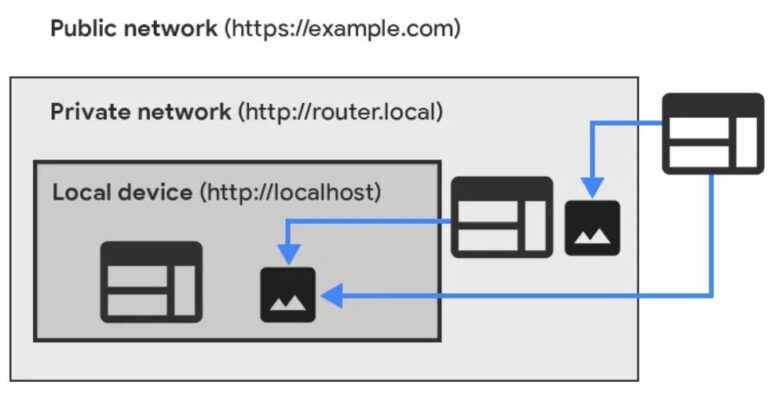Curl is a robust tool that facilitates the interaction with web services through command-line requests, supporting various protocols such as HTTP, FTP, and SFTP.
This guide delves into the fundamentals of Curl, beginning with the essentials of HTTP requests and responses, and provides instructions on how to configure Curl for seamless communication with web services, including details on how to handle cookies and transfer data efficiently.
Common applications include retrieving and posting data, uploading files, and advanced techniques such as authentication and error handling.
Best practices are outlined to optimize the use of Curl, ensuring both performance and data integrity. Whether one is a beginner or seeking to enhance their skills, this guide will provide the necessary knowledge to effectively leverage Curl in various projects.
What is Curl?
Table of Contents
- 1 Basics of Interacting with Web Services using Curl
- 2 Common Uses of Curl for Web Services
- 3 Advanced Techniques for Web Service Interaction with Curl
- 4 Best Practices for Using Curl with Web Services
- 5 Frequently Asked Questions
- 5.1 What is Curl and how is it used to interact with web services?
- 5.2 What are the benefits of using Curl to interact with web services?
- 5.3 How can I send a request to a web service using Curl?
- 5.4 Can Curl handle requests that require authentication?
- 5.5 Is it possible to save the response from a web service using Curl?
- 5.6 Are there any limitations to using Curl to interact with web services?
Curl is a robust command-line tool and library utilized for transferring data to and from a server using a variety of protocols, including HTTP, FTP, and SFTP. It allows clients to interact with web services seamlessly by sending requests and receiving responses, making it an invaluable resource for developers and system administrators who require the ability to fetch or upload data from URLs.
Curl supports numerous features such as authentication, cookie handling, header management, and proxy configurations, rendering it a versatile option for diverse use cases across multiple platforms, including Linux, Windows, and AIX.
Originally developed by Daniel Stenberg in 1997, curl was created as a tool for transferring files via the URL syntax. Over the years, it has evolved to incorporate support for numerous protocols, significantly enhancing its functionality and expanding its user base.
Currently, curl is extensively employed in web service integrations and serves as a foundational component for APIs, effectively facilitating the sending of HTTP requests and the management of responses. Its capability to parse and handle various data formats, such as JSON and XML, has made curl essential for developers engaged in testing, debugging, and scripting web applications.
This adaptability ensures its continued popularity among professionals working with networked systems, cloud services, and microservices architectures.
Basics of Interacting with Web Services using Curl
Interacting with web services using curl is essential for developers seeking to send HTTP requests and manage responses effectively. Curl can act as a command-line browser, allowing users to fetch and upload data directly from the server.
Curl enables users to utilize various HTTP methods, such as GET and POST, to facilitate communication with servers, retrieve data, upload files, and even access hidden parameters within web applications.
A comprehensive understanding of these fundamental aspects allows clients to automate tasks and connect with APIs efficiently, positioning curl as a critical tool in contemporary web development.
Understanding HTTP Requests and Responses
HTTP requests and responses serve as the foundation of web communication, facilitating effective interactions between clients and servers through various methods, including GET, POST, PUT, and DELETE. Each request is composed of a method, a URL, headers, and optionally, body content. The server processes this information to return an appropriate response, which includes status codes and response bodies. A thorough understanding of the structure and flow of these requests and responses, as outlined in RFC 3986 for URI components, is essential for utilizing curl to interact with web services effectively.
The GET method is primarily employed to retrieve data from a server, while the POST method is utilized for submitting data, such as forms, for processing. Conversely, the PUT method is typically used for updating existing resources, distinct from the DELETE method, which is responsible for removing specified resources.
When utilizing curl, these methods can be exemplified by commands such as using a specific user agent or setting the host and port for the connection:
- ‘curl -X GET http://example.com’
- ‘curl -X POST -d ‘key=value’ http://example.com’
These commands effectively illustrate the applications of the methods and demonstrate the action of sending requests to retrieve or submit data via the specified URL.
Request headers, which contain metadata regarding the request, play a crucial role in conveying information such as content type and authorization. Headers can also specify the timing of requests and proxy settings. The server subsequently responds with status codes that indicate the outcome of the request—such as the widely recognized 200 OK for successful requests or 404 Not Found for resources that are unavailable.
Response bodies contain the actual data requested or an error message, thereby completing the communication loop between clients and servers.
Setting Up Curl for Web Service Interaction
Setting up cURL for effective web service interaction requires ensuring that the tool is properly installed and configured to meet the specific requirements of the user’s environment. Regardless of whether the user is operating on Linux, Windows, or AIX, it is imperative to become familiar with the command-line interface and the various options available in cURL, such as verbose mode and trace for debugging, to enhance the overall experience.
Proper configuration is essential for optimizing cURL’s capabilities in sending requests, efficiently handling responses, and managing file transfers.
To initiate the installation process, users should first verify any prerequisites, including the presence of updated libraries such as OpenSSL for secure connections.
On Linux systems, cURL is typically installed through package managers like apt or yum. Windows users may opt to install cURL via Chocolatey or by directly downloading the executable.
Once the installation is complete, selecting appropriate configuration settings—such as timeout specifications and proxy configurations—is crucial for effective interactions.
Users can activate the verbose option by appending the -v flag to their command, which will provide detailed information about the request and response process, thereby helping with diagnosing issues when connecting to web services.
Common Uses of Curl for Web Services
Curl is extensively utilized in numerous contexts when interfacing with web services, enabling users to send HTTP requests for data retrieval or information submission with ease.
Developers frequently employ curl for testing APIs, automating server interactions, and executing data uploads or downloads, rendering it an essential tool in both development and production environments.
By leveraging the functionalities of curl, users can efficiently manage data in various formats, including JSON and XML, to fulfill their application requirements.
Retrieving Data from Web Services
Retrieving data from web services using curl is a straightforward process that generally involves sending an HTTP GET request to a specified URL. This command prompts the server to return the requested data, which may be formatted in various ways, such as JSON or XML, depending on the API specifications. It is essential for developers to understand how to construct these requests and handle responses effectively to utilize curl in their applications.
To enhance the GET request, one can define headers using the -H option, thereby customizing the request for specific content types or authentication requirements. For instance, including headers such as ‘Accept: application/json’ allows users to request JSON responses.
Managing query parameters is also vital for narrowing down the data set; this can be accomplished by appending them to the URL as key-value pairs.
When handling responses, it is important to interpret various status codes—such as 200 for success or 404 for not found—and to properly parse the body content to ensure successful data retrieval and effective error handling.
For example, executing a command such as ‘curl -H “Accept: application/json” “http://api.example.com/data?query=example”‘ illustrates how to effectively combine headers and query parameters, facilitating seamless interaction with APIs.
Posting Data to Web Services
Posting data to web services using curl typically involves the submission of an HTTP POST request, enabling users to transmit data to a server for processing. This methodology is crucial for operations such as form submissions or data updates, where the client must send structured information, such as JSON or form parameters, to the server. A comprehensive understanding of the intricacies involved in setting up POST requests with curl is essential for developers who aim to implement efficient data submission strategies.
To illustrate, a standard curl command for sending JSON data would be formatted as follows:
curl -X POST -H "Content-Type: application/json" -d '{"key"value"}' https://example.com/api
In contrast, when utilizing form data, the command would resemble:
curl -X POST -d 'key=value' https://example.com/api
It is imperative that the data being sent is properly formatted. For instance, when transmitting JSON, the data must be structured in key-value pairs, and the headers must include ‘Content-Type: application/json’ to inform the server of the data format. Conversely, if form data is being employed, the header ‘Content-Type: application/x-www-form-urlencoded’ is required. Additionally, users should consider the use of secure connection protocols such as HTTPS over TCP/IP to ensure data privacy and integrity.
After executing a request, developers should be equipped to handle server responses, which may consist of status codes indicating success or errors, and be prepared to parse any returned data for subsequent actions.
Advanced Techniques for Web Service Interaction with Curl
Advanced techniques for web service interaction using curl necessitate a comprehensive understanding of the implementation of authentication methods, error handling, and the assurance of secure data transfer. Users may integrate OAuth tokens or basic username and password authentication to access secured endpoints, or configure proxy settings to route requests through a specific network path.
Given that web services frequently require user authentication, curl offers a range of options for incorporating basic authentication, OAuth, and token-based systems.
Moreover, proficiency in error handling and debugging techniques is crucial for developers to effectively address and resolve any issues that may occur during interactions with servers.
Authentication and Security Considerations
When interacting with web services using cURL, it is essential to implement appropriate authentication and security measures to safeguard sensitive data. Various methods are available, such as basic authentication, tokens, and OAuth, which allow users to securely convey their credentials during requests. Utilizing HTTPS to encrypt data in transit significantly enhances security, making it imperative for developers to comprehend these concepts when employing cURL.
For example, basic authentication encodes user credentials; however, it may not provide sufficient protection without HTTPS, which could leave them vulnerable during transmission. In contrast, token-based authentication offers a more secure alternative by limiting the lifespan of access credentials and allowing for easy revocation. OAuth, on the other hand, is particularly effective for enabling third-party applications to access user data without requiring direct sharing of passwords.
Best practices recommend consistently opting for HTTPS to prevent the interception of sensitive information, as well as employing strong, unique passwords or secret keys to further enhance security. Proper authentication and encryption not only protect data but also instill confidence in users interacting with your services.
Handling Errors and Exceptions
Effectively managing errors and exceptions when utilizing cURL is essential for maintaining functionality and enhancing user experience in applications. By analyzing HTTP response codes, developers can identify various issues such as client errors (4xx) or server errors (5xx) and implement suitable error-handling strategies.
The use of debugging options in cURL can assist in diagnosing problems during request execution, thereby ensuring that interactions with web services are as seamless as possible.
A comprehensive understanding of these response codes enables developers to respond promptly to issues, such as a 404 error indicating that a resource could not be found or a 500 error signifying a server malfunction.
In practice, cURL’s -v and --trace options generate detailed logs of request and response headers, which facilitate the identification of points of failure within the process. For instance, when encountering a 403 Forbidden error, a meticulous examination of the output may uncover underlying issues related to authentication or permissions.
Effective error handling not only enhances the reliability of applications but also improves user satisfaction by providing informative feedback and guiding users toward resolution.
Best Practices for Using Curl with Web Services
Implementing best practices for utilizing curl with web services is essential for optimizing performance and ensuring data integrity.
By adhering to guidelines such as employing appropriate methods for data transfer, implementing retries for failed requests, and validating the response structure, developers can create more robust and efficient applications.
Structuring curl commands correctly not only enhances performance but also contributes to a more seamless user experience.
Optimizing Performance
Optimizing performance when utilizing curl is crucial for enhancing data transfer efficiency and minimizing response times. Developers may employ various techniques, such as request pipelining, utilizing connection keep-alive, and adjusting timeout settings, to improve the overall performance of their applications.
Monitoring timing and response metrics can yield valuable insights into potential bottlenecks, enabling users to make informed adjustments.
One effective approach involves modifying the concurrency level of requests, which can significantly accelerate data retrieval in situations where multiple resources must be fetched simultaneously. For example, when downloading large datasets, issuing simultaneous curl calls can greatly reduce wait times.
Utilizing built-in options such as –rate-limit can assist in managing bandwidth consumption, ensuring that servers are not overwhelmed while maintaining stable performance.
Furthermore, understanding and analyzing timing metrics—such as namelookup time and connect time—can facilitate the identification of inefficiencies, allowing developers to refine their strategies effectively.
In practical applications, these optimizations can mean the distinction between a sluggish user experience and a seamless interaction.
Ensuring Data Integrity
Ensuring data integrity when utilizing curl is essential for validating the accuracy and reliability of transferred information. Developers can implement verification methods such as checksums or hashes to validate the data received in responses against the original data sent. This practice not only assists in identifying potential issues during the transfer process but also enhances the overall reliability of web service interactions.
By employing techniques such as MD5 or SHA-256 hashing, developers can compare the computed hash of the received data with the expected hash value to confirm that no alterations occurred during transmission. Additionally, utilizing validation techniques such as JSON schema validation can ensure that the structure and format of the data adhere to predefined criteria, thereby providing an extra layer of security.
To implement these checks within curl commands, one can use the -o flag to save the response and subsequently apply hashing commands for comparison. Maintaining meticulous data accuracy is imperative, as it fosters trust in applications and prevents data corruption, which could lead to critical failures.
Frequently Asked Questions
What is Curl and how is it used to interact with web services?
Curl is a command line tool and library used for transferring data to or from a server. It supports a wide range of protocols, including HTTP, HTTPS, FTP, and many more. It is commonly used to interact with web services by sending and receiving requests and responses.
What are the benefits of using Curl to interact with web services?
Using Curl allows for easy testing and debugging of web services, as it provides detailed information about the requests and responses. It also supports a variety of authentication methods and can handle all types of data, making it a versatile tool for interacting with web services.
How can I send a request to a web service using Curl?
To send a request, you need to specify the URL of the web service and the type of request (GET, POST, PUT, etc.). You can also add any necessary headers or data to the request. Once the request is sent, you will receive a response from the web service.
Can Curl handle requests that require authentication?
Yes, Curl supports several authentication methods, including Basic, Digest, and NTLM. You can specify the authentication method and provide the necessary credentials in the request.
Is it possible to save the response from a web service using Curl?
Yes, you can save the response from a web service to a file using the -o or –output flag. You can specify the name and location of the file to save the response in.
Are there any limitations to using Curl to interact with web services?
Curl has a limit on the size of data it can handle, which is set at 2 GB by default. It also does not support automatic redirection, so you may need to manually handle redirects in your requests. Other than these limitations, Curl is a reliable and powerful tool for interacting with web services.



